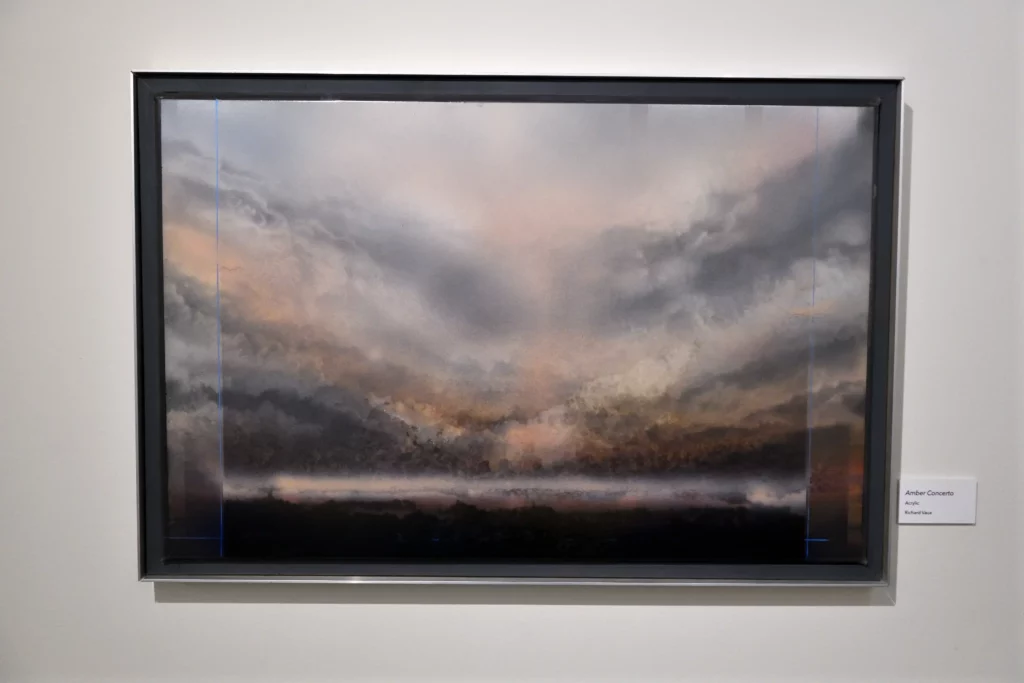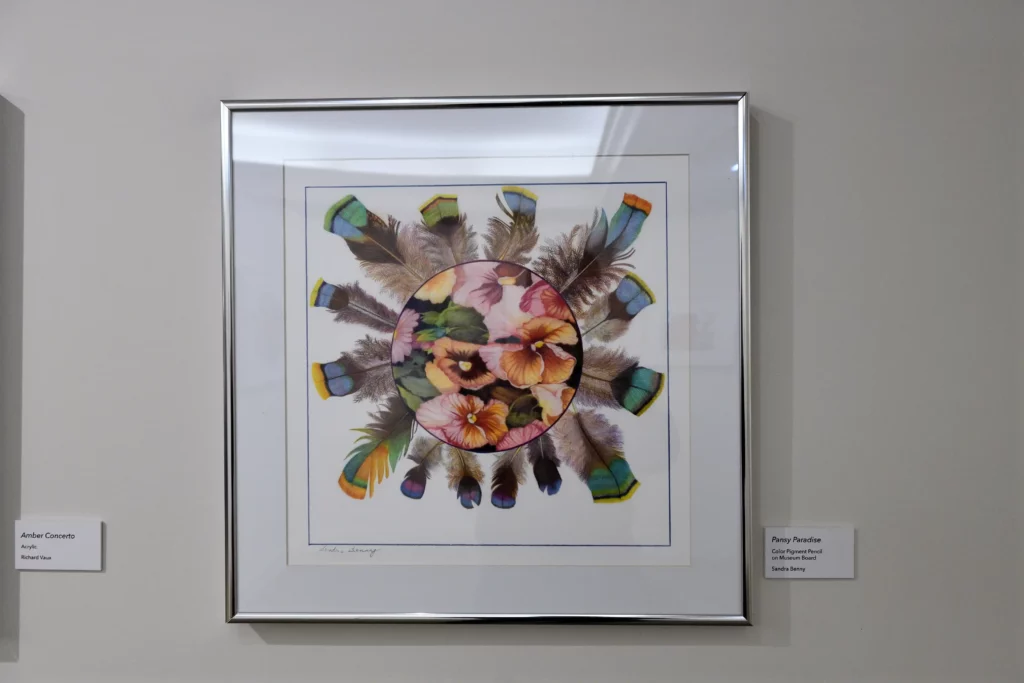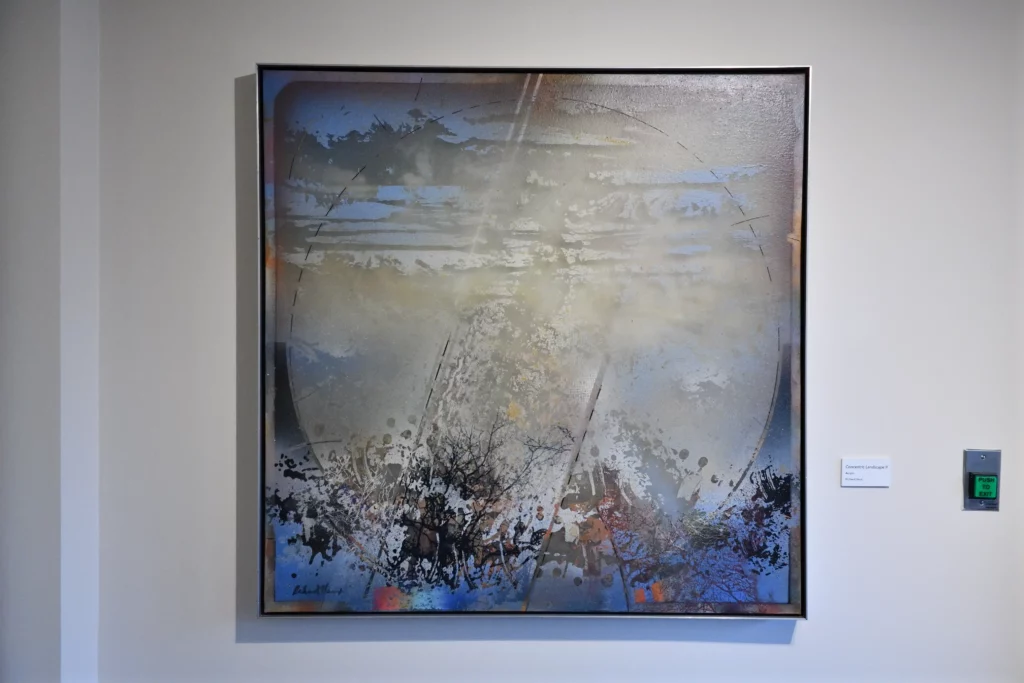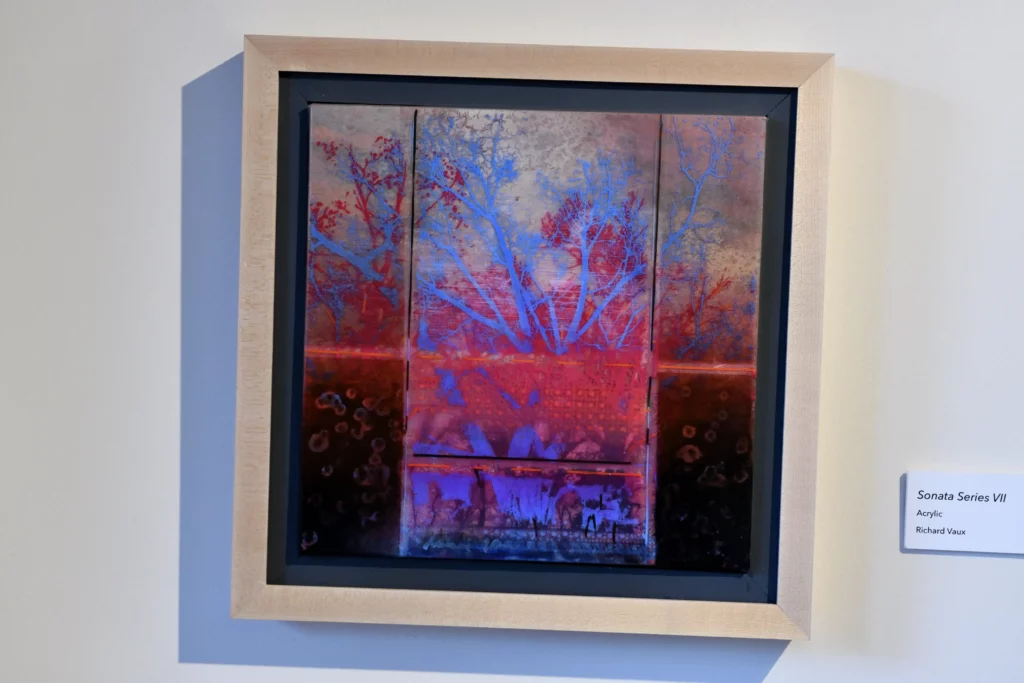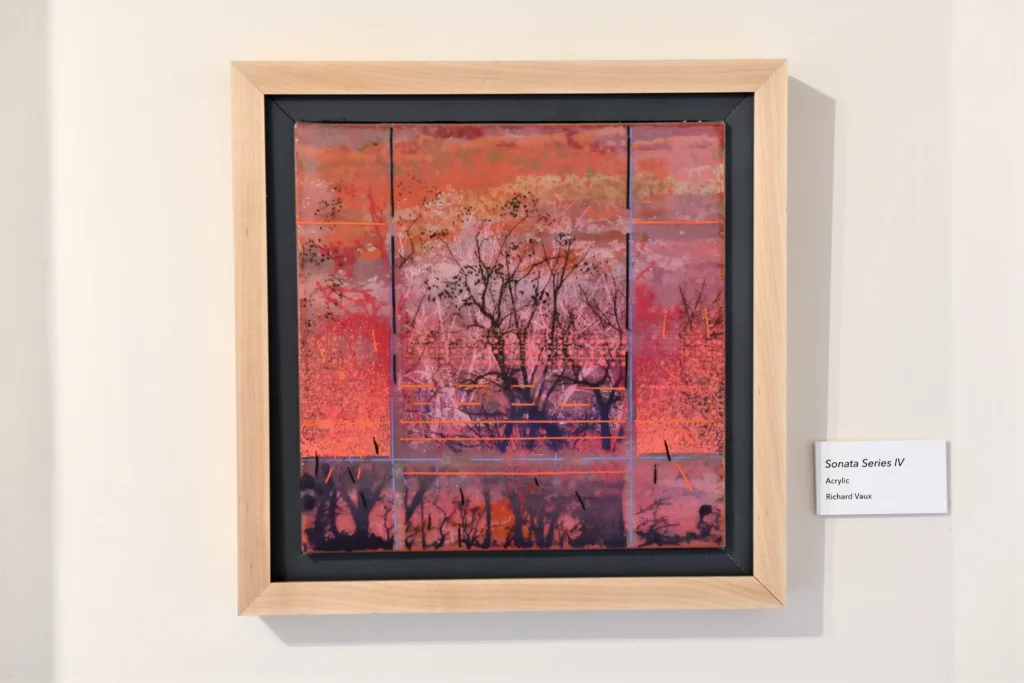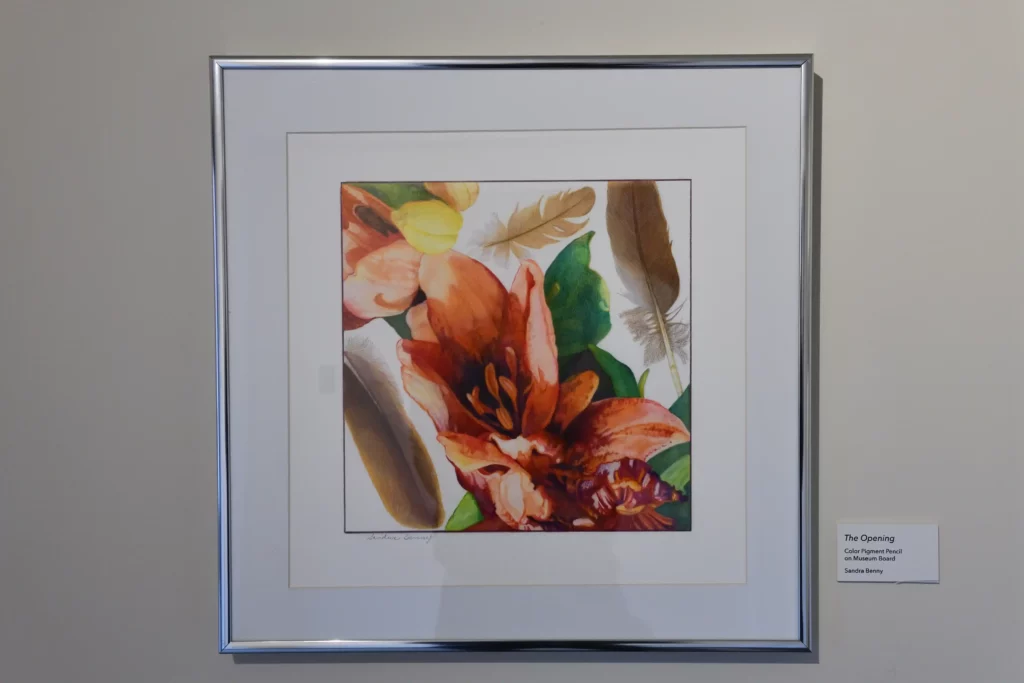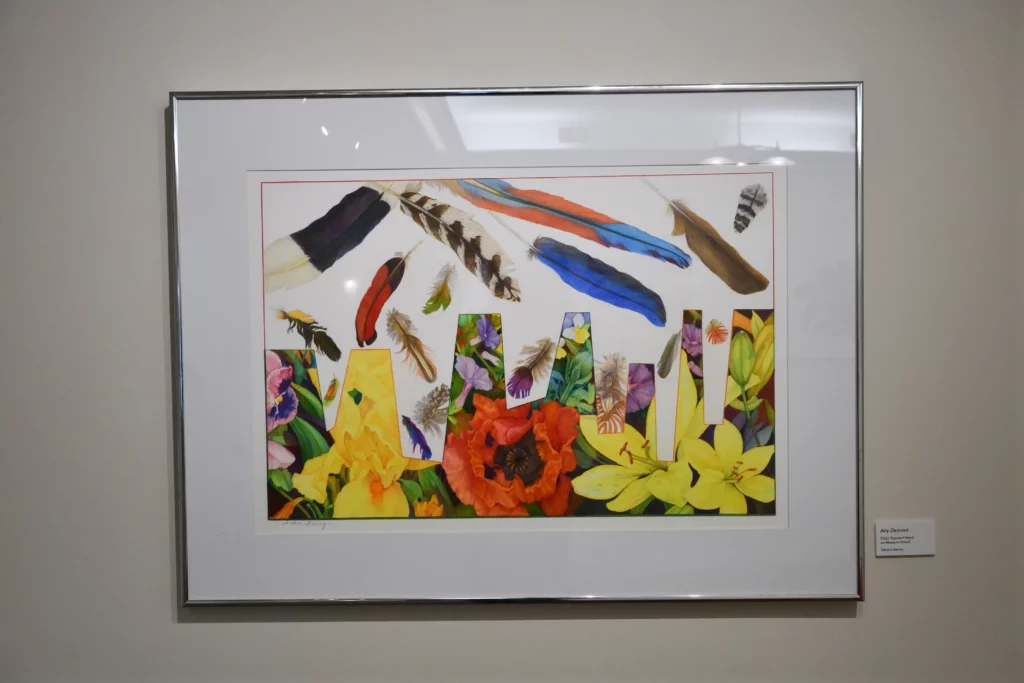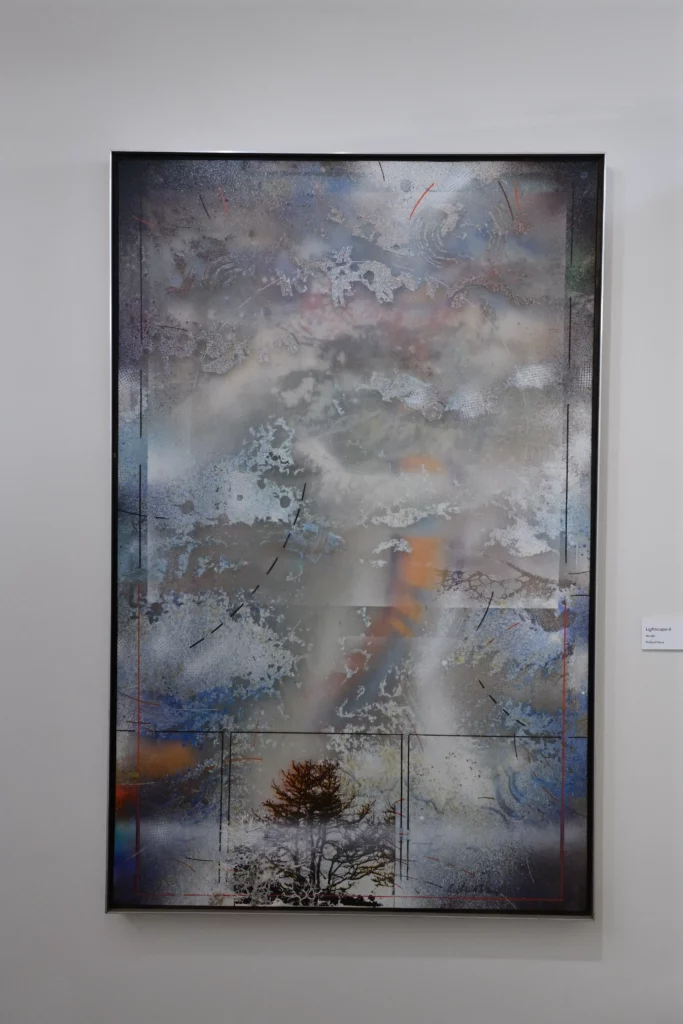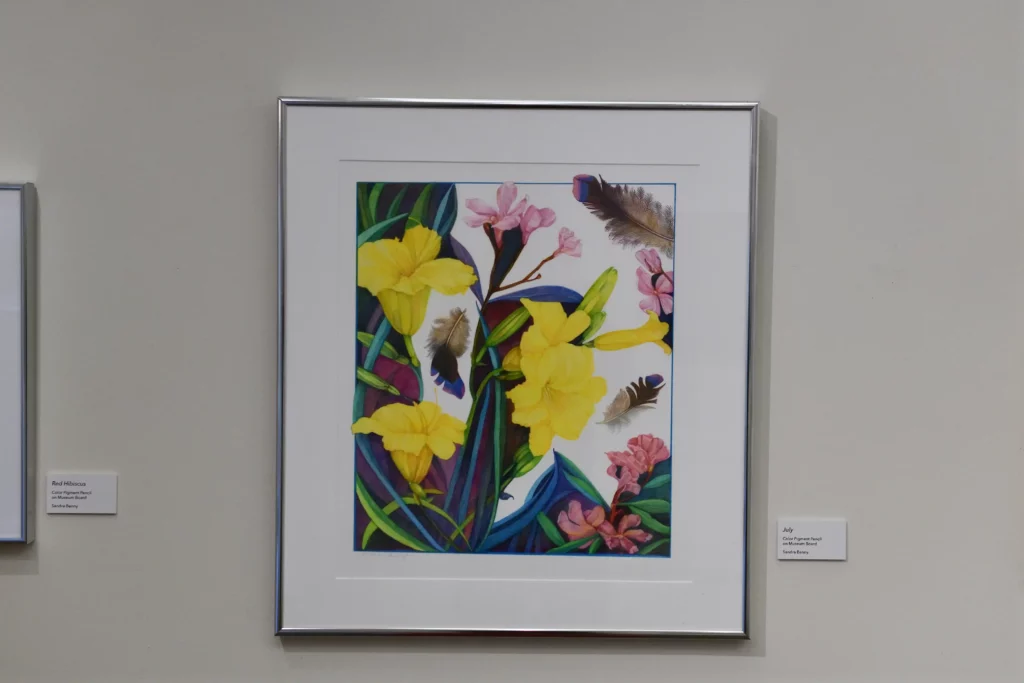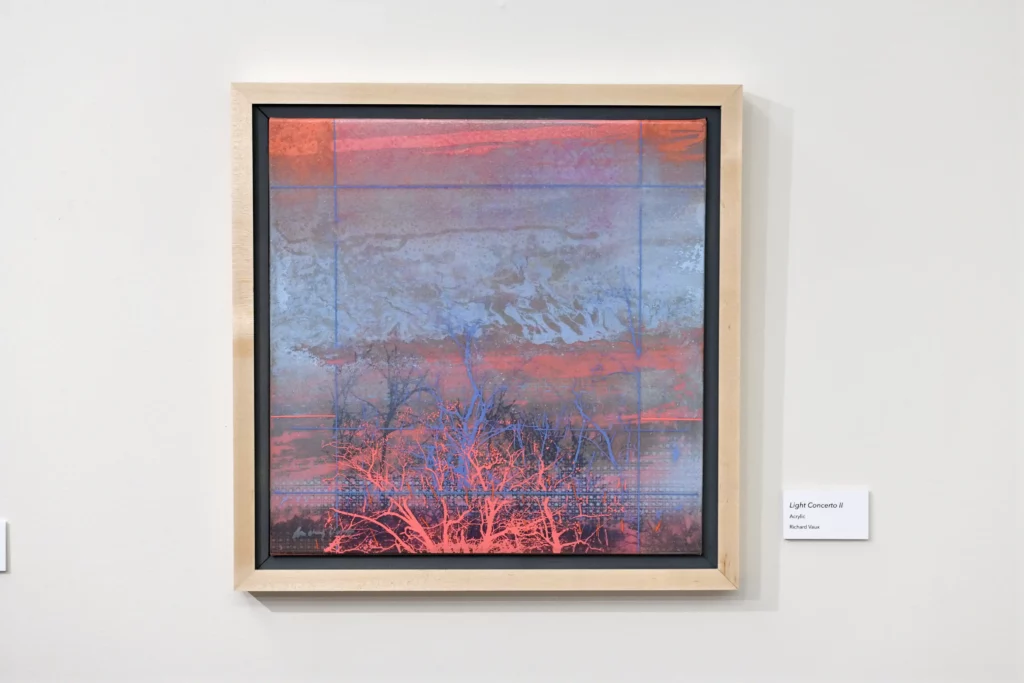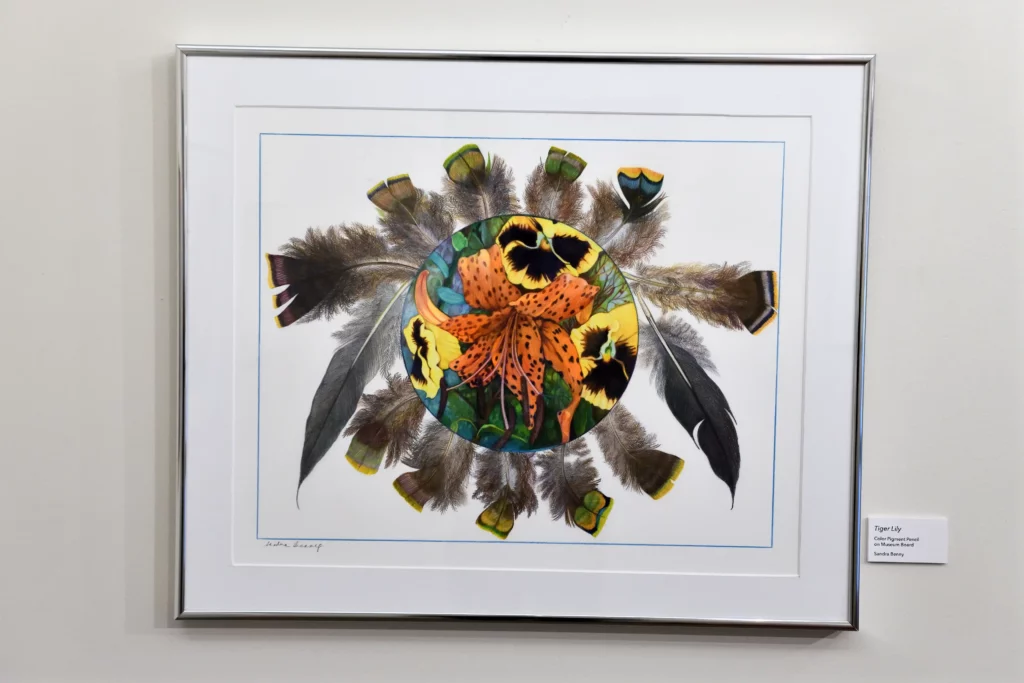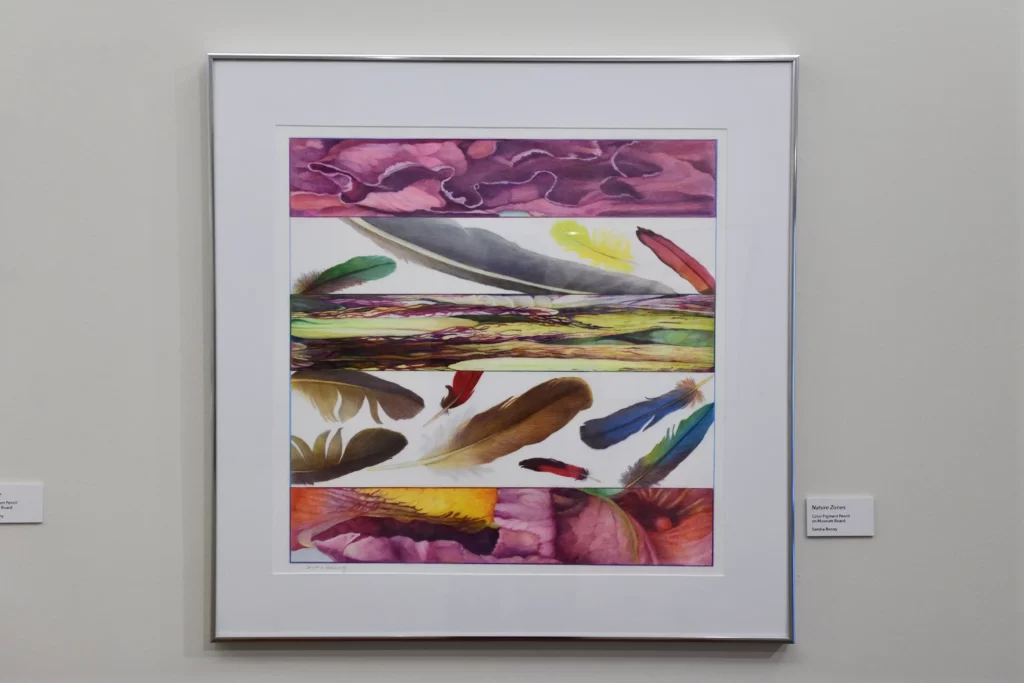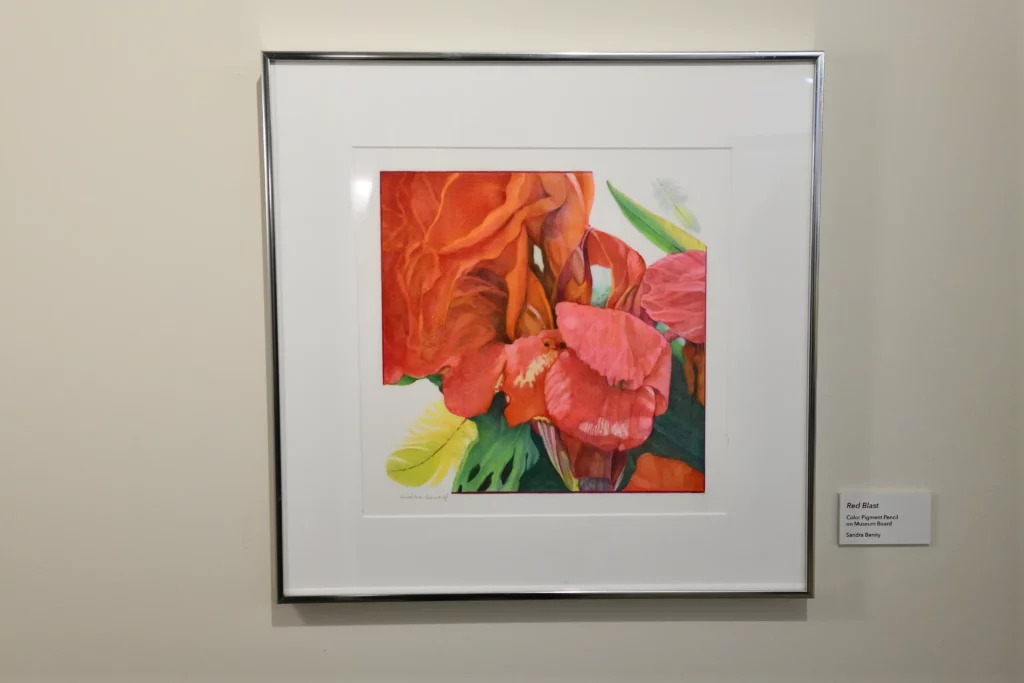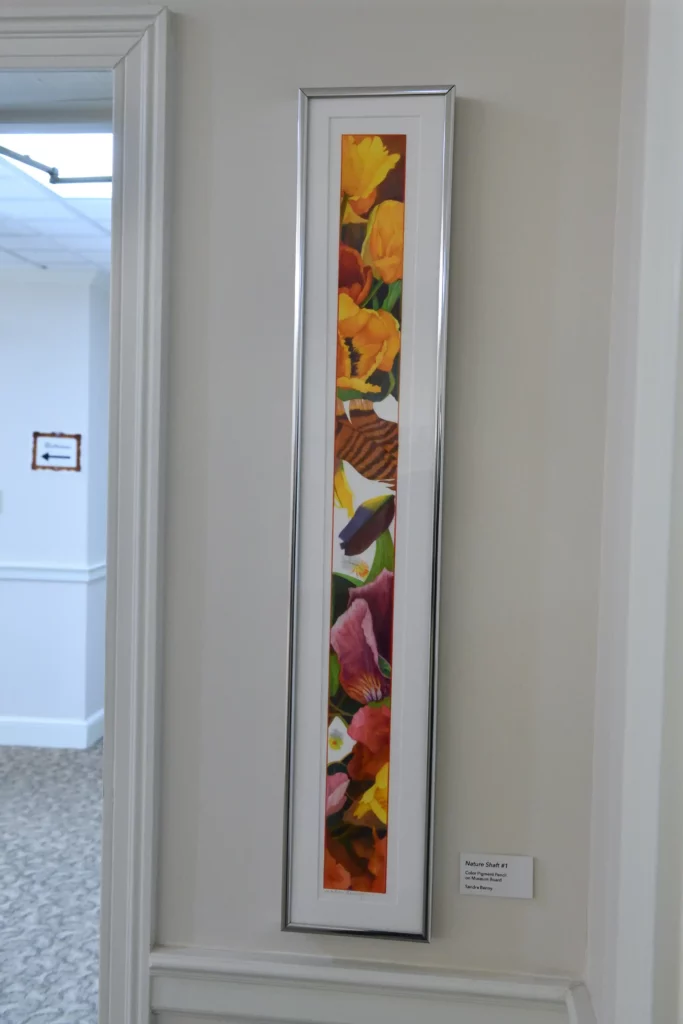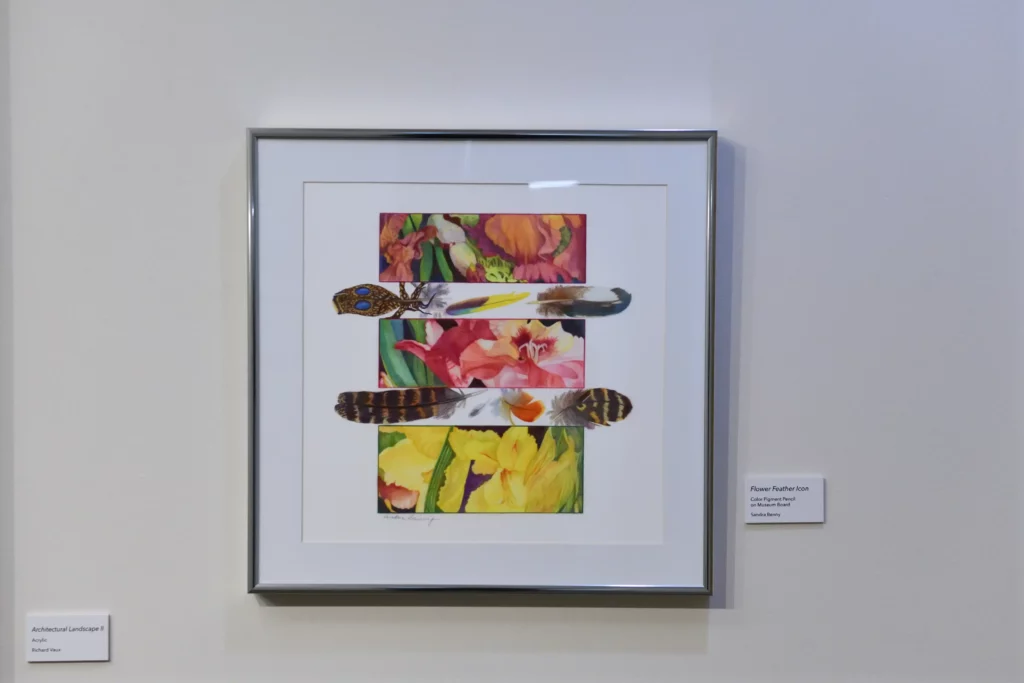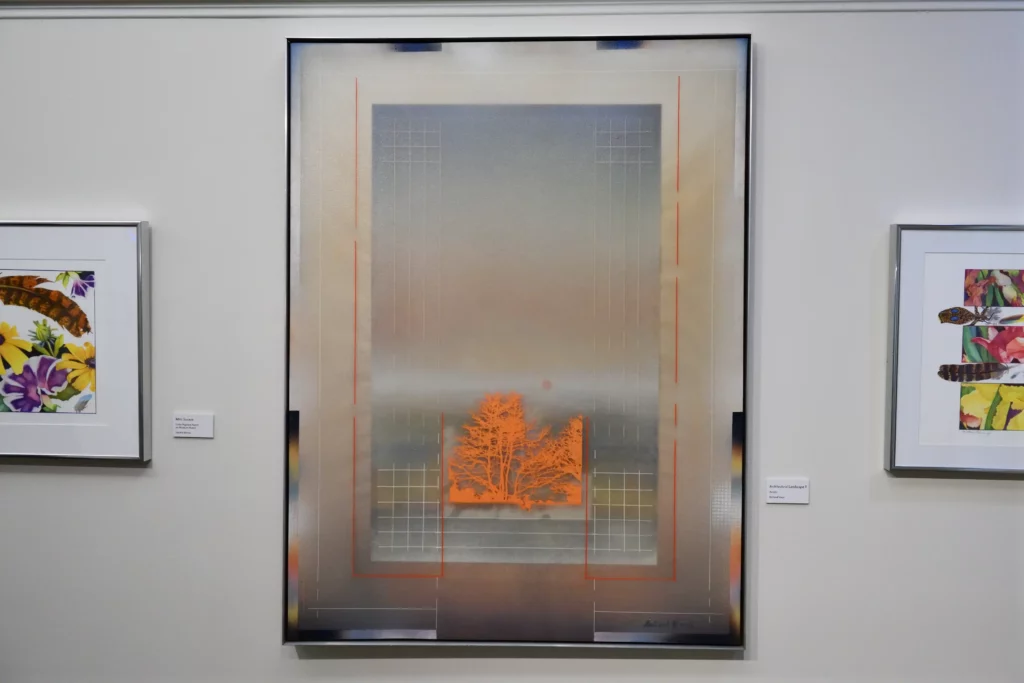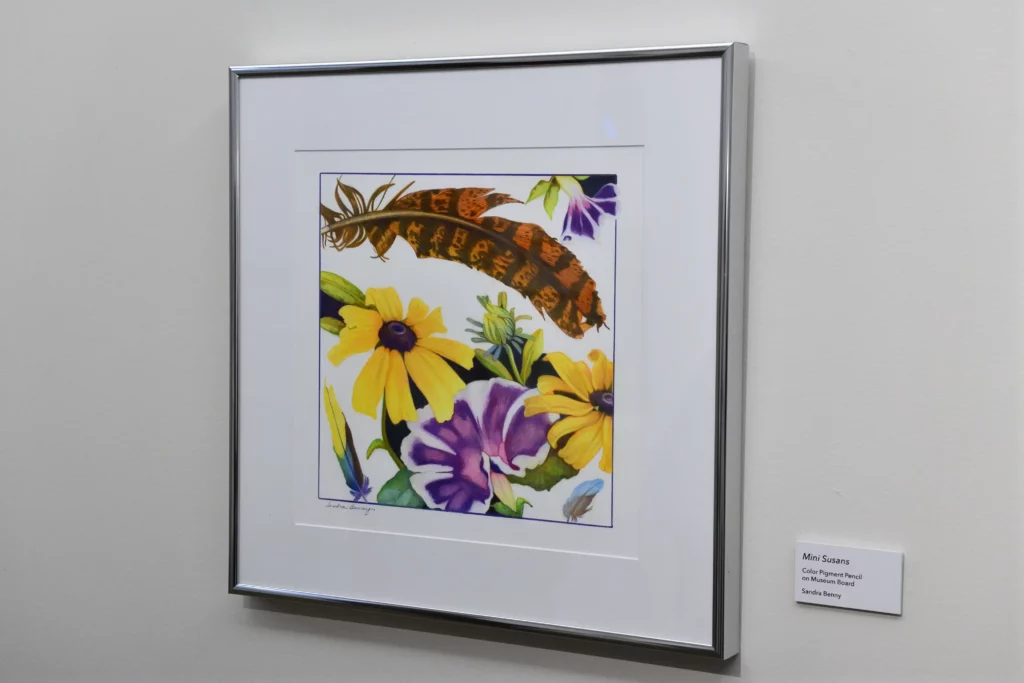

Past Exhibit
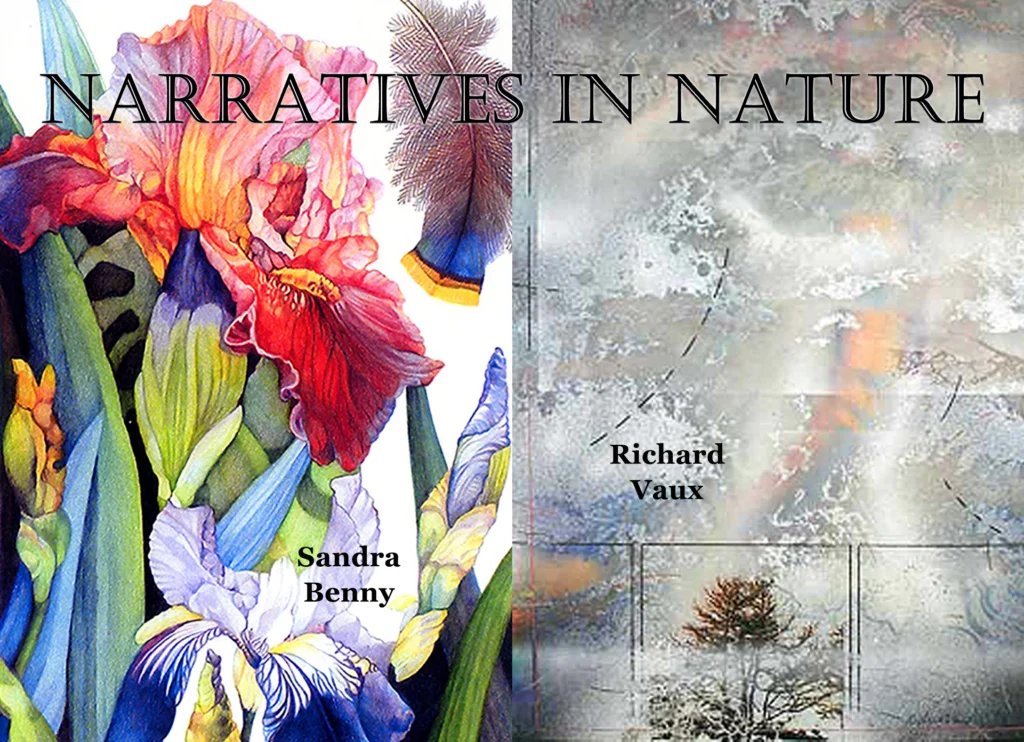
Narratives in Nature
Peg's Gallery
January 11, 2023 — March 14, 2023
Artist Statements
Sandra Benny says nature has always been the greatest inspiration for her drawings. The majestic color combinations and designs found in feathers, flowers, sunsets, clouds, and other phenomena of the natural world create a treasure trove of possible compositions. Individual feathers are very intriguing to her. The colors and patterns on each feather are unique. Flaws, acquired in daily life, add character. Centers of flowers are often composed of patterns that become focal points of her work. She likes to emphasize the unobtrusive parts in nature and believes that we are stewards of this earth and only temporary visitors. She says “my work is the diary of my life.”
Richard Vaux says his paintings and mixed media works are nature inspired abstractions. Searching for the harmonies and balances in nature, the works parallel natural phenomena. Each composition is a visual poem about light and illumination…the visible and the invisible.
Art historian Irma B. Jaffe had this to say of Richard’s work, “Entering the radiant environment created by the paintings of Richard Vaux in his studio or in a gallery where his work is installed is to move into a space that engages one wholly. Thoughts, feelings, memories, sensations flow together, immersing the viewer in a familiar atmosphere that permits instant empathy with the luminous reality of the art—created space. This is a space that must be understood as a metaphor for the real world of nature before which Richard Vaux, as artist, stands gazing, like a lover, and which he strives to possess by giving himself to his love. Nature, obedient to the touch, gentle or ardent, of this suitor, has given him, over and over again, what he has sought, over and over again—her ineffable lightness of being. Light. Lightness. Material. Immaterial. These are the fundamental dualities that surround the viewer and set off complex responses that draw deeply from the well of aesthetic experience. The paintings absorb and radiate light, and one finds oneself in a world resonating with the echoes of religion, philosophy, and the natural wonders. Surrounded by Vaux’s paintings, one is called to remember that light as Truth, as Goodness, and as Beauty has its own long history in philosophy. While not overtly religious, the sacred implications of the paintings of Richard Vaux seem ineluctable. He has given his inborn gift to nature. He has celebrated her minutiae and her grandeur, her openness, and her mystery. Is not every serious celebration an acknowledgement of transcendence?”
